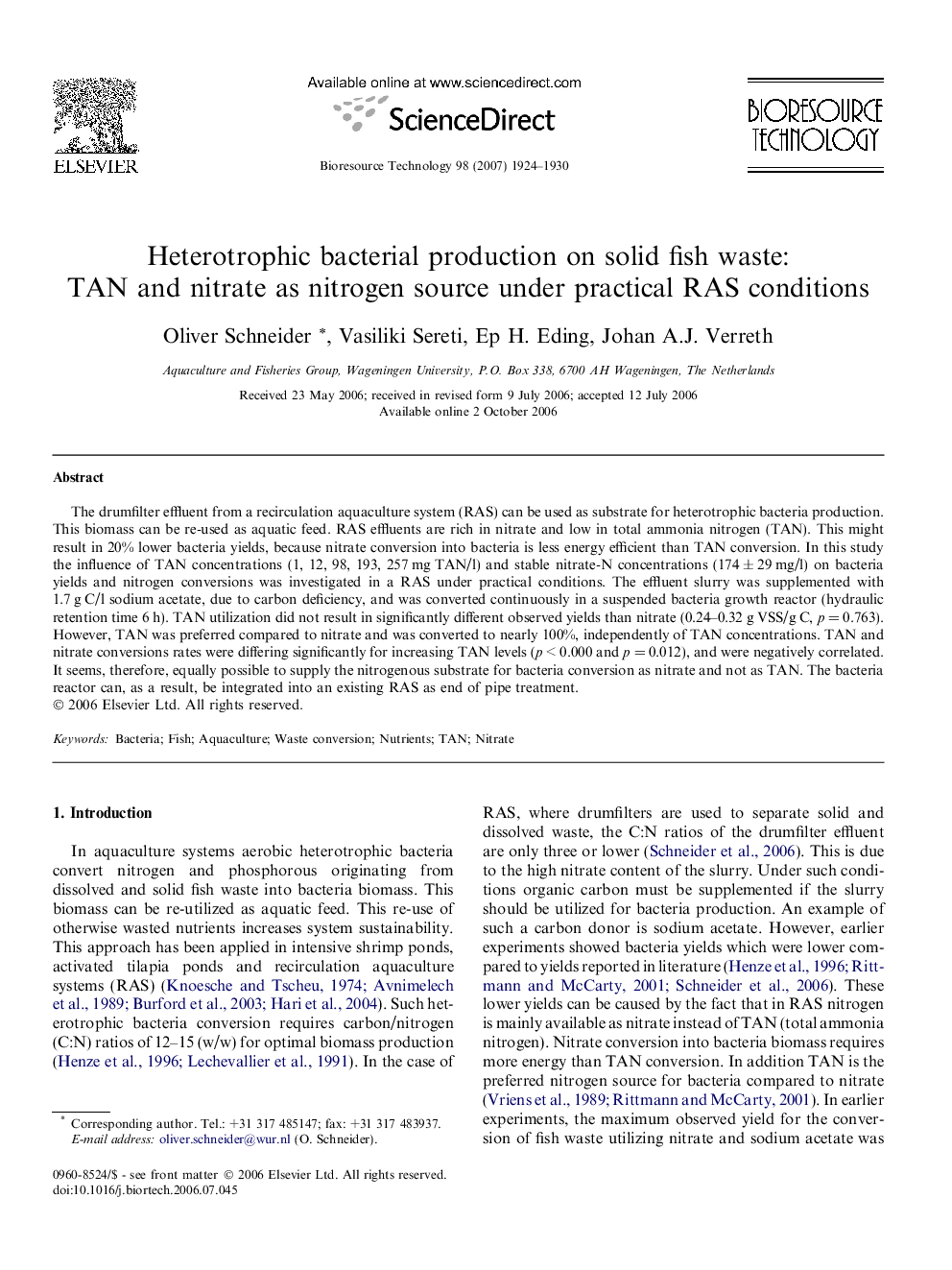| Article ID | Journal | Published Year | Pages | File Type |
|---|---|---|---|---|
| 686403 | Bioresource Technology | 2007 | 7 Pages |
The drumfilter effluent from a recirculation aquaculture system (RAS) can be used as substrate for heterotrophic bacteria production. This biomass can be re-used as aquatic feed. RAS effluents are rich in nitrate and low in total ammonia nitrogen (TAN). This might result in 20% lower bacteria yields, because nitrate conversion into bacteria is less energy efficient than TAN conversion. In this study the influence of TAN concentrations (1, 12, 98, 193, 257 mg TAN/l) and stable nitrate-N concentrations (174 ± 29 mg/l) on bacteria yields and nitrogen conversions was investigated in a RAS under practical conditions. The effluent slurry was supplemented with 1.7 g C/l sodium acetate, due to carbon deficiency, and was converted continuously in a suspended bacteria growth reactor (hydraulic retention time 6 h). TAN utilization did not result in significantly different observed yields than nitrate (0.24–0.32 g VSS/g C, p = 0.763). However, TAN was preferred compared to nitrate and was converted to nearly 100%, independently of TAN concentrations. TAN and nitrate conversions rates were differing significantly for increasing TAN levels (p < 0.000 and p = 0.012), and were negatively correlated. It seems, therefore, equally possible to supply the nitrogenous substrate for bacteria conversion as nitrate and not as TAN. The bacteria reactor can, as a result, be integrated into an existing RAS as end of pipe treatment.
